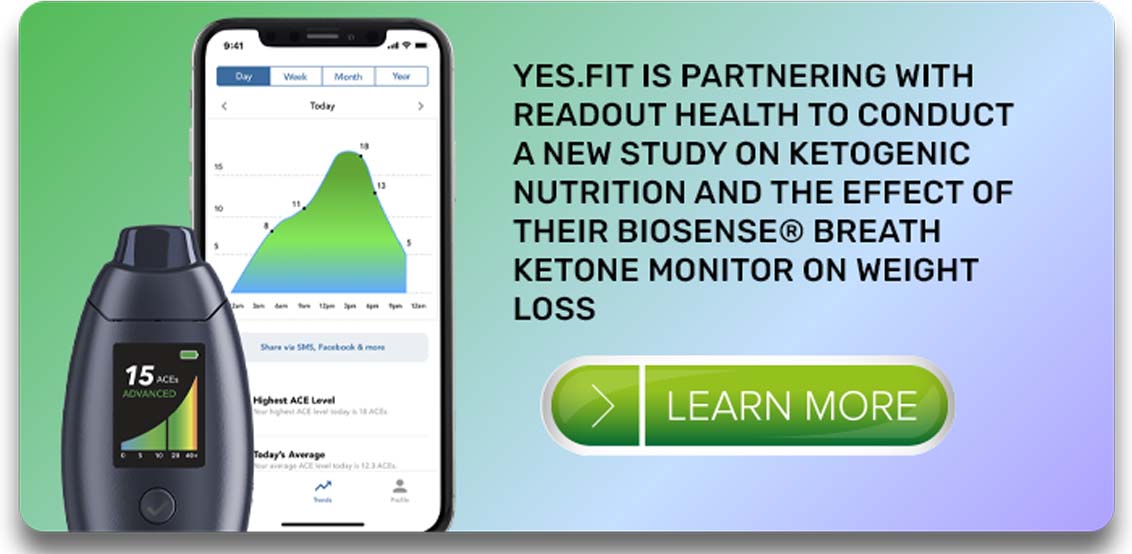Many individuals on a low carbohydrate diet are looking to improve their health and fitness. In the long-term, getting our body into a state of ketosis where the body relies on burning fat for fuel instead of sugar will certainly help to boost a person's endurance and increase overall strength.
However, individuals that are new to this diet will need to be cautious about over-exercising as the body needs time to adjust to a new source of energy. High-intensity, high-impact exercises can have a deleterious effect on individuals who are just beginning their ketosis journey.
Low-impact exercises, designed appropriately, can help increase the benefits of keto at a faster rate. Let’s look at what exactly keto does to the body and how it impacts physical activity.
Keto + Body
The human body primarily runs on glucose and fatty acids, both of which come about from this low carb/high-fat diet. Glucose is the energy source derived from carbohydrates (sugars and starches). Fatty acids are the energy source that come from fats.
When an individual is on a standard diet, glucose is the first source of fuel to be burned, but on a ketogenic diet, the primary fuel source is shifted towards fatty acids through carbohydrate depletion. The benefits of this shift are myriad, but to reap these benefits, the body must first adjust to the new fuel system.
The adjustment period takes 2 to 3 weeks, and during this time some individuals may experience the “keto flu”: a state of irritability, sleeplessness, and discomfort that results from the body’s rapid adaptation to a different avenue of energy usage.
Even without “keto flu” symptoms, individuals going through the keto-adaptation process may experience a lack of energy and may have greater difficulty recovering from exercise.
Keto + Workout Benefits
Ketosis aids in recovery and increases general physical wellbeing. Exercise, in and of itself, is a major factor in personal health. Sedentary lifestyles are a known contributor to a variety of serious chronic diseases, ranging from adult-onset diabetes to cardiovascular disease.
Exercise helps maintain physical health through several pathways. Exercise increases:
- Fat burning
- Improves body composition
- Increases VO2 max
- Helps keep blood pressure and blood sugar under control.
Exercise helps with mental health as well. Regular exercise has been scientifically proven to boost mood due to its ability to increase favorable hormones like serotonin and brain-healthy proteins.
Once the body has adjusted to burning fatty acids as a primary fuel source, the benefits of exercise are greatly amplified. The top advantage that ketogenic individuals have with exercise is an enhanced ability to lose fat mass. Several studies conducted on keto-adapted endurance athletes have proven that the ketogenic diet enhances the individual ability to burn fat.
The benefits of ketosis on exercise are not simply limited to fat loss. Ketosis can also improve muscle gain and aid in overall body composition. There are large bodies of evidence that support a beneficial relationship between the ketogenic diet and regular exercise.
Training Before Ketosis
When in ketosis, the ability to perform HIIT is greatly enhanced, allowing you to perform HIIT longer with greater overall power. Individuals who have not yet adapted to a ketogenic state may find HIIT difficult. It is recommended that during the 2 to 3 week period before ketogenic adaptation, low-intensity exercises should be favored over high-intensity exercises.
Low-intensity exercises are exercises that stimulate the body and promote physical wellness but do not necessarily bring individuals to exhaustion. Some of these exercises include light jogging, walking, biking, or swimming, and milder forms of weight training.
Ketogenic Exercise
Once the adaptation period has neared its conclusion, moderate-to-high intensity exercises may be reintroduced into one’s regular regimen. But before embarking on more intense forms of exercise, it is important to make sure that one’s health is well-supported by lifestyle. Care should be taken not only to remain in a state of ketosis but also to support ketosis with fresh, well-sourced foods. Ketogenic individuals should make sure that their diets include high-quality meats and vegetables and do not neglect any vital nutrients.
Once the individual is in a ketogenic state, the body is primed to respond differently to different kinds of exercises. Provided here are some examples of different forms of exercises that ketogenic individuals can experience benefits from.
In Conclusion
Better rates of fat loss, better rates of glycogen storage, and improved stability of blood glucose have been consistently reported in individuals who exercise while in a ketogenic state. With proper planning and care, the ketogenic diet can vastly expand the benefits of regular exercise, compared to standard or high-carb diets.
In exercise, it is crucially important to track your exercise progress and ketone production. The Biosense monitor is accurate enough to replace invasive blood measurements. By simply breathing into the device, you will have a reliable measurement of your current ketone levels in seconds and will know your fat-burning levels instantly. No more urine strips, no more pricking your finger – just a fast, easy and reliable breath test. You can bring our device with you to the office, take it to the gym – you can truly check your ketones anywhere.

Learn More About the Study in this Video:
Disclaimer: The content is not intended to be a substitute for professional medical advice, diagnosis, or treatment. Always seek the advice of your physician or other qualified health provider with any questions you may have regarding a medical condition.




